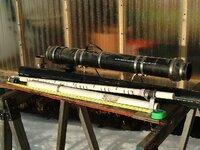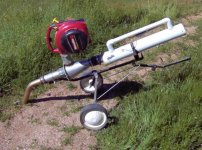Sluicedog
Jr. Member
- Jul 5, 2007
- 78
- 45
- Detector(s) used
- Whites GMT, Garrett Gold Stinger, Garrett XL500 Pulse, 2" Sub-Dredge,Goldsnare SGS-1, ELF detector, MFD w/electronic detector
- Primary Interest:
- Prospecting
Does anyone know how this air dry washer works, inside details... check out the movie, or have experience with it in a gold bearing area?
It seems some cyclonic action is inside, maybe this separates the heavies.
It seems some cyclonic action is inside, maybe this separates the heavies.






